- I would like to thank RIAC and the embassy of India for inviting me to this session on India-Russia cultural and historical connect. The discussion is timely. Both India and Russia are ‘branding’ themselves as civilizational states. They have a deep-rooted historical and cultural connection, which goes back several centuries. Both India and Russia are cooperating in a multipolar world and looking for new narratives, which would bring them not only bilateral relations but also global peace and stability. It is therefore pertinent to recall the historical and civilizational connection between the two civilizations.
- Afanasiev Nikitin, a Russian merchant from Tver, visited India in 1469 and lived there for three years. He recorded his impressions in a book THE JOURNEY BEYOND THE THREE SEAS. Visiting India before Vasco de Gamma in 1498, he was the first European to have come to India. Travelling from the Volga region to Azerbaijan and Persia, he landed in Gujarat and went to the Deccan through Maharashtra. This was the time of conflict between Bahmani Sultans and the Vijaynagar Kingdom. The Deccan region was in great turmoil. His impressions are of great historical value and show that there was a great deal of commerce between India and the Russian lands in those days.
- After Nikitin, the Russian merchant Seymon Malenkiy, brought a letter from Peter the Great to Aurangzeb in 1696, seeking permission to conduct trade in India. He visited Surat, Burhanpur, Agra, Delhi and other cities.
- In 1722 Peter the Great met the Indian merchant Anbu-Ram in Astrakhan. The latter sought permission from the Emperor to allow Indians to conduct transit trade with China and Western European countries via Russia. Permission was granted. Indian merchants became visible in Moscow, St. Petersburg and were present at Russia's largest Makaryevskaya fair in Nizhny Novgorod, and went as far as Arkhangelsk! A fairly large colony of Indian traders numbering a couple of hundred came up in Astrakhan.
- Russian interest in Indology developed in the 18th century. St Petersburg became the hub of Indology.
- Gerasim Lebedev spent significant time in India in the 1780s and published many books including the translation of the poetry of Bengali poet Bharatchandra Roy, a Russo-Hindustani dictionary and a book on the grammar of Eastern dialects.
- In 1818, Uvarov inaugurated the Asiatic Academy of St Petersburg, where German academics were the first to teach Sanskrit.
- Pavel Yakovlevich Petrov, a Sanskrit scholar, translated Ramayana and Kalhana’s Rajatrangini (The River of Kings) into Russian. He taught Sanskrit in the mid-19th century in Kazan and later in Moscow.
- Rudolf von Roth and Otto von Bohtlingk, two German scholars who lived St Petersburg compiled a seven-volume Sanskrit-German dictionary and an edition of the Sanskrit grammar of Panin, Ashtadhyayi.
- In the 19th century Ivan Minayev, one of the greatest Russian Indologists travelled to India and Ceylon in 1874-75 and collected unique historical data. His collection is preserved in the Museum of the Russian Academy of Sciences in St Petersburg.
- Yet another St Petersburg-based Indologist Fyodor Stcherbatskoy, a student of Minayev, was an authority on Buddhist texts. His scholarship won him the admiration of Jawaharlal Nehru and Rabindranath Tagore.
- Russians have been deeply interested in Indian spirituality, particularly Yoga. Konstantin Stanislavsky incorporated several yogic exercises and psychological techniques into his Stanislavsky System to develop concentration and solitude.
- Russian spiritual thinkers Lev Tolstoy, PA Sorokin, Yakov Popov, and Nicholas Roehrich were influenced by Vedantic philosophy and the teachings of Ramakrishna and Vivekananda. Tolstoy had read the partial translations of the Upanishads, Rig Veda etc. Swami Vivekananda’s key works like Raja yoga were translated into Russian. Russian scholar Popov had even met Swami Vivekananda. It was his translations of Vivekananda’s work that reached Tolstoy. Nicholas Roerich was also influenced by Swami Vivekananda. He described him as a ‘radiant giant’. Roerich visited Belur Math, the headquarters of the Ramakrishna mission. A Vedantic society was set up in Moscow which continues to do great work. Ramakrishna's mission has been active in Russia for a long time.
- Nicholas Roerich and his son Svetoslav Roerich through their paintings and writings and visits acted as a spiritual bridge between Indian and Russian cultures. The Roerich’s legacy continues to be celebrated through two museums in Himachal Pradesh and Karnataka.
- Indian philosopher and writer Rabindranath Tagore, who championed the concept of universal vision through art and literature, influenced both Russian and Indian thinkers emphasizing the cultural exchange between India and Russia.
- Mahatma Gandhi, the father of Indian nation had correspondence with lev Tolstoy, both were influenced by the concept of non-violence. The letters exchanged by Gandhi and Tolstoy illustrate the similarities and contrasts in their thinking and ideals and the profound influence. Tolstoy had deep influence on Gandhi’s life and thoughts. Gandhi was impressed with Tolstoy’s quest for truth.
- Russia and India relationship is extremely important for the Eurasian subcontinent. This is true today as was in the 19th century. There was Russia French plan of 1897 to invade India. The plan was never implemented but it led to the start of the Great Game in Central Asia, which involved Afghanistan. The Russian advances in Central Asia in the 19th century alarmed the British who were then consolidating their rule in India.
- The Anti-British uprisings in 1857 in India, also known as the First War of Indian Independence, evoked great sympathy in Russia. The three Anglo-Afghan wars of the 19th 20th century were the direct result of the geostrategic competition between Russia and Britain over the status of Afghanistan, which separated the two empires.
- Russia had some role in India’s freedom struggle. In 1915, Maharaja Mahendra Pratap Singh and his colleagues of the Ghadar party set up a provisional government in Kabul to fight the British. They sought help from Germany, Russia, Turkey and the Soviet Union for their cause. Barkatullah Khan, the ‘prime minister’ of the provisional government and Mahendra Pratap Singh had met Lenin and Trotsky in this regard. Lenin had advised him to do to achieve freedom from the British by waging a class struggle, an idea which did not find favour with them.
- Subhas Chandra Bose, one of India’s tallest leaders, set up the Indian National Army which actually fought during 1943-47 with the help of the Japanese. Before he went to Germany from Afghanistan, Bose travelled through Russia exploring the possibility of support.
- Bollywood has been a great bridge between the Indian and the Russian people at the popular level. Several Indian iconic films like Awara, Barud, Disco Dancer etc. have been appreciated in Russia. Indian actors and filmmakers have regularly participated in the Tashkent Film Festival for several years during the Soviet times. Films remain an important connector between India and Russia at the popular cultural level.
- A dialogue of eminent Indian experts on Russia and Russian experts on India, called the Ganga-Volga Dialogue of Civilizations took place in New Delhi on 22 January 2020. The Dialogue proposed by emanated from Prime Minister Narendra Modi and President Putin. The Dialogue touched upon four broad themes namely education, culture and civilization; entrepreneurship and innovation; trade routes including inland navigation; and, India, Russia and Greater Eurasia.
- Buddhism provides a direct link between Indian and Siberian culture. As Prof K Warikoo points out “The Eurasianism of Russia …brings it closer to India in historical-cultural, political and economic terms. As Buddhism spread from India to Central Asia, Mongolia, Buryatia, Tuva and far wide, the peoples of Siberia (Buryatia, Chita, Irkutsk, Tuva, Altai, Urals etc.) developed distinctive historico-cultural affinities with the Indian Himalayas particularly due to common traditions and Buddhist culture”.
Geopolitics
Popular Culture
Way Forward
India and Russia are projecting themselves as civilisational states. The two countries have had significant cultural and civilisational contact. The spread of Buddhism from India to Central Asia and Eurasia, the strong tradition of Indology in Russia, and the geopolitical factors have played a role in developing historical and cultural connections between the people of India and Russia. As the world order changes, there is a need to rediscover these connections and build further upon them. The Ganga Volga dialogue needs to be resumed. More academics scholars and experts should be brought into these discussions. The Vivekananda International Foundation which has a civilisational orientation in its work will be prepared to work with RIAC and other Russian institutions to contribute in further deepening cultural and civilisational links between our two countries.
(The paper is the author’s individual scholastic articulation. The author certifies that the article/paper is original in content, unpublished and it has not been submitted for publication/web upload elsewhere, and that the facts and figures quoted are duly referenced, as needed, and are believed to be correct). (The paper does not necessarily represent the organisational stance... More >>


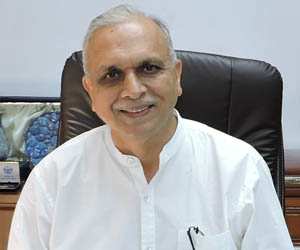


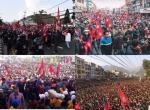
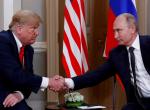

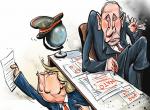

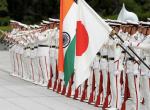
Post new comment